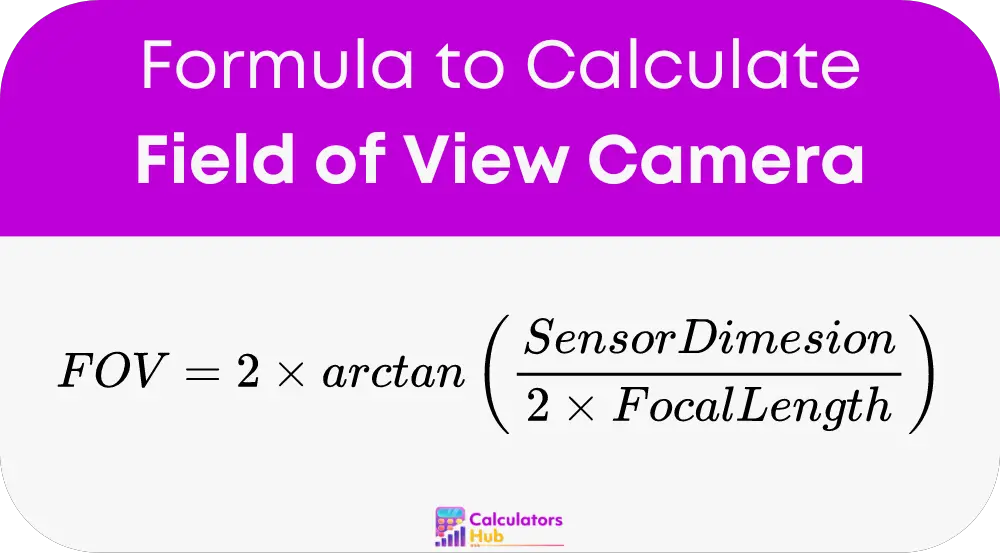The Field of View of a camera describes the extent of the observable environment that is visible through the lens at any given moment. It is a vital concept in photography because it affects how much of a scene can be captured and from what distance. The FOV is influenced by two key factors: the focal length of the lens and the size of the camera's sensor. Understanding this relationship helps in making informed decisions about lens selection, positioning, and ultimately, composition.
Formula of Field of View Calculator Camera
The formula to calculate the field of view (FOV) is an essential tool for photographers and videographers:

Where:
- FOV is the field of view in degrees.
- arctan is the arctangent function, a trigonometric function that is essential for calculating angles in this context.
- sensor dimension refers to either the width or height of the camera sensor in millimeters.
- focal length is the distance in millimeters from the optical center of the lens to the sensor when the subject is in focus.
This formula is invaluable as it allows for precise calculations of how different lenses will perform on various sensor sizes, helping photographers visualize their shots before taking them.
Table of General Terms and Useful Calculations
To aid in practical application, here is a detailed table that correlates common focal lengths and sensor sizes with their resultant field of view:
| Focal Length (mm) | Sensor Size (mm) | Field of View (degrees) |
|---|---|---|
| 18 | 35 | 100.4 |
| 24 | 35 | 84.1 |
| 35 | 35 | 63.4 |
| 50 | 35 | 46.8 |
| 85 | 35 | 28.6 |
| 200 | 35 | 12.3 |
This table serves as a quick reference for understanding how changes in the lens and sensor dimensions impact the field of view.
Example of Field of View Calculator Camera
Let's apply the FOV formula to a practical example:
Calculating the field of view for a 35mm lens on a full-frame camera (sensor size approximately 36mm wide):
FOV = 2 * arctan (36 / (2 * 35)) ≈ 63.4 degrees
This setup is ideal for capturing a wide range of subjects without distorting the perspective. Suitable for street scenes or environmental portraits.
Most Common FAQs
A1: For landscapes, wider focal lengths (24mm or shorter) are typically prefer to capture expansive views and vast horizons.
A2: Changing the sensor size while keeping the same focal length alters the field of view. Larger sensors yield a wider field of view, making them ideal for capturing more of the scene.
A3: The fundamental principles of field of view apply universally across digital and film cameras. The key variables—sensor size (or film size) and focal length—remain the driving factors in determining the FOV.